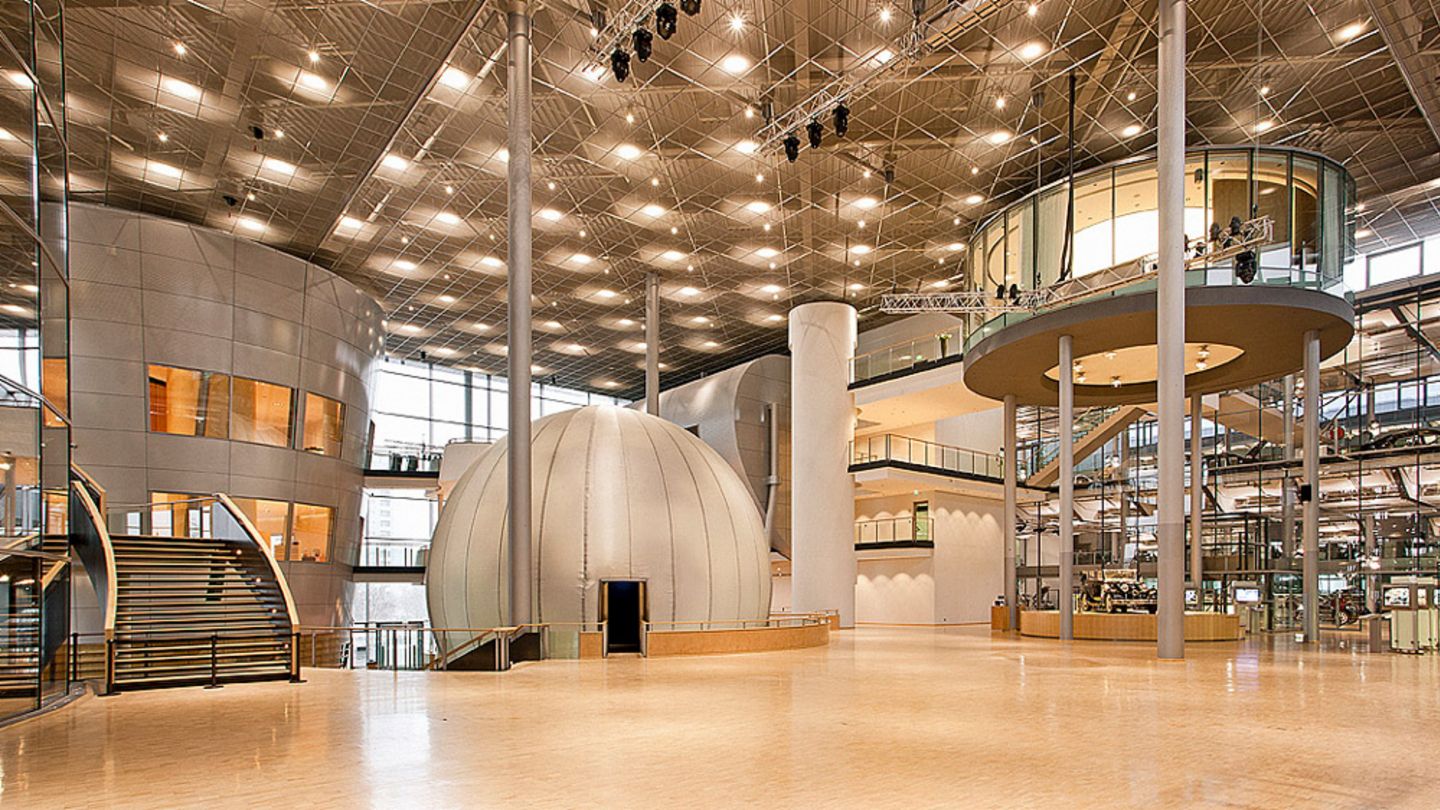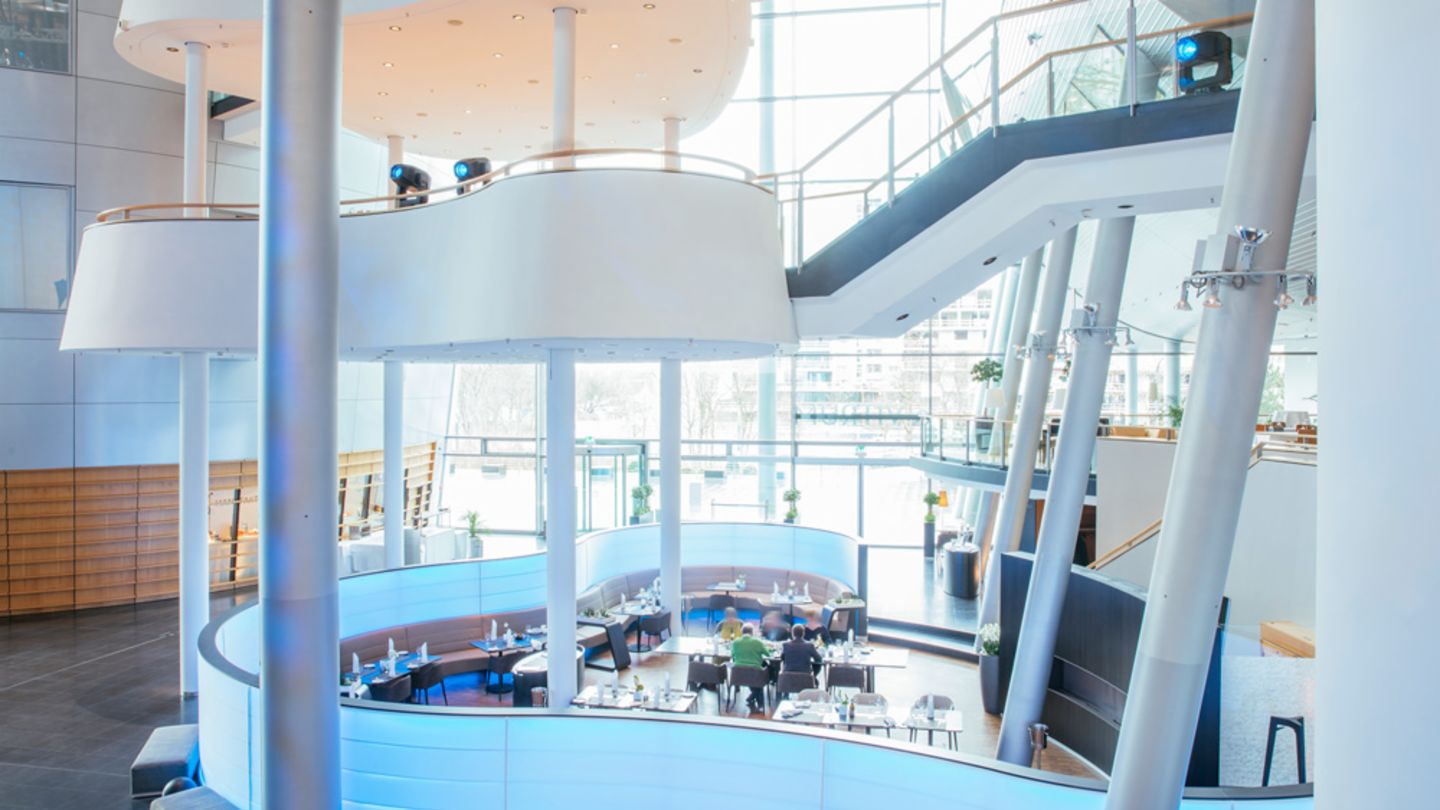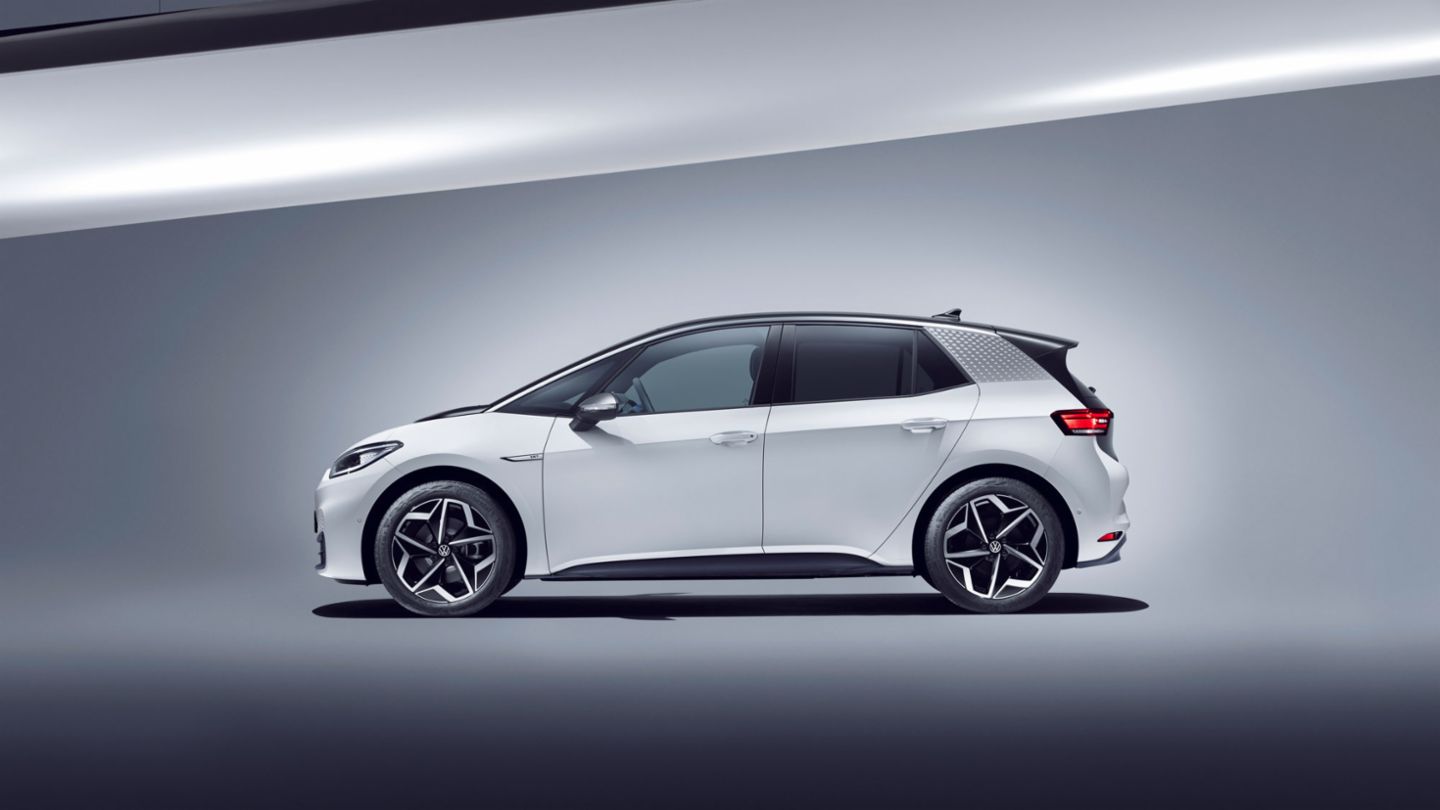We visited its office in Berlin for an interview with managing director Martin Henn and Georg Pichler, an architect and a partner at the firm. They explain why architecture conceived around 20 years ago for the production of a luxury sedan now also works as a place to explore future approaches to mobility.
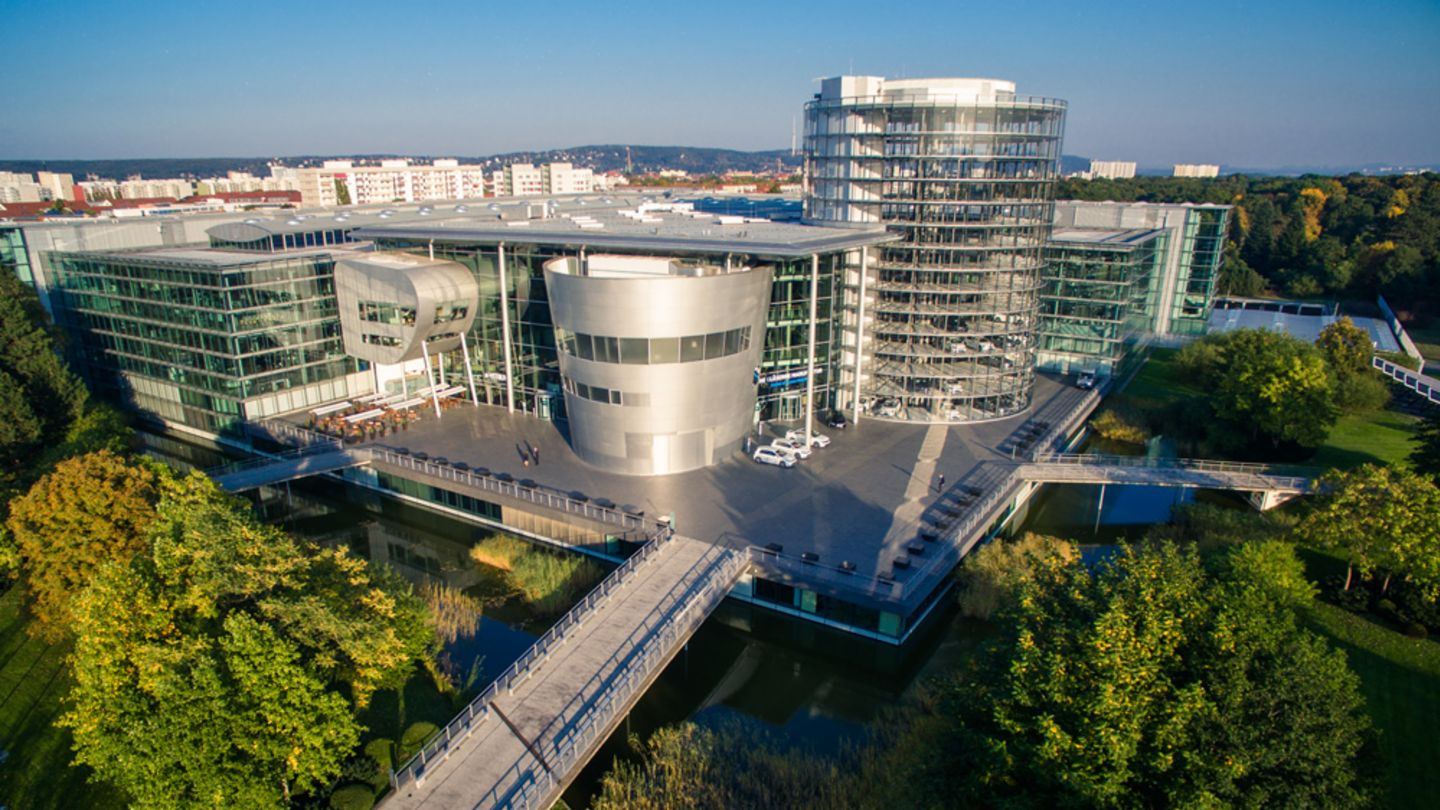
The Gläserne Manufaktur stands in the middle of Dresden, right next to the Großer Garten park.
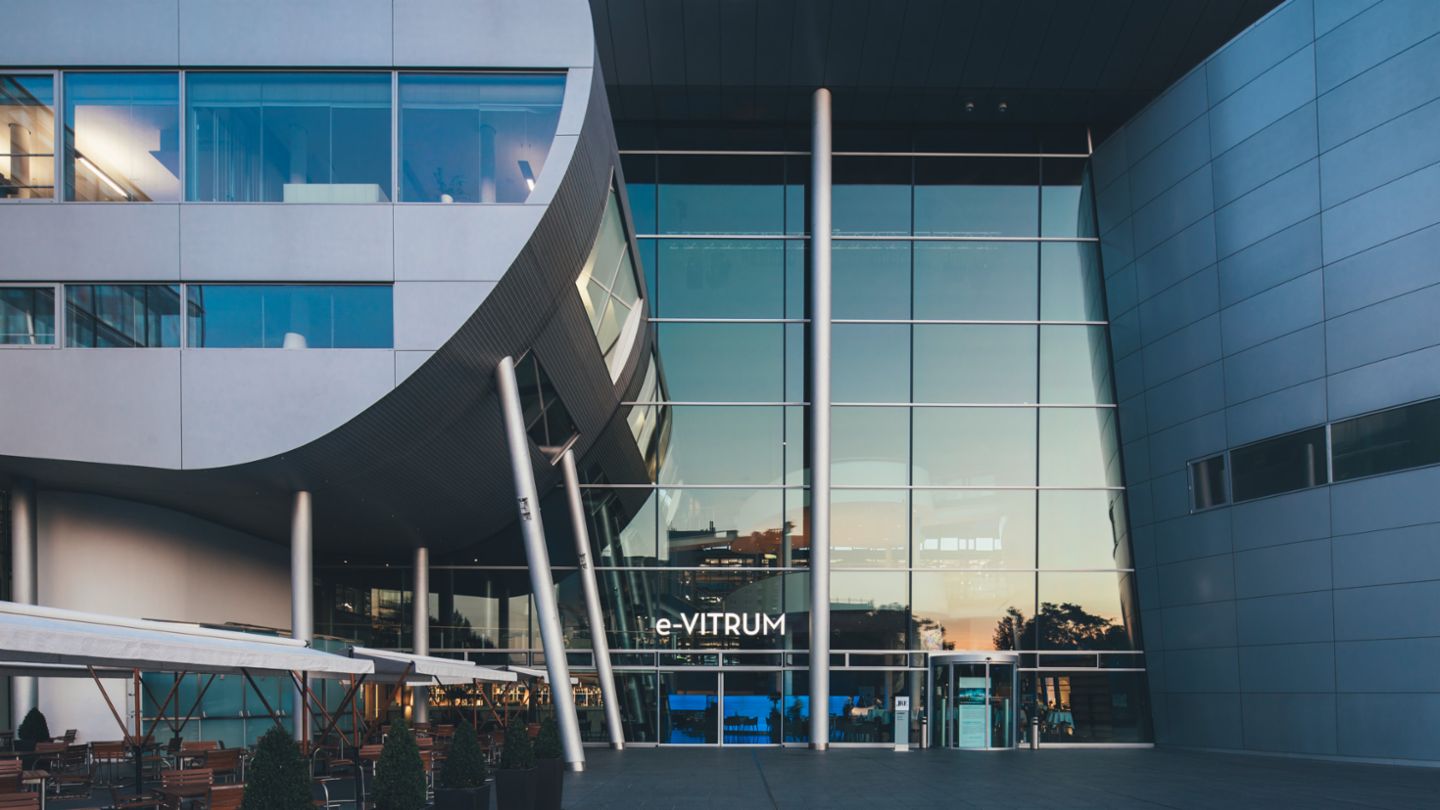
The straight and rectangular lines of the production hall contrast with the organic forms of the vis

The transparent facade was built with 27,500 square meters of glass.
